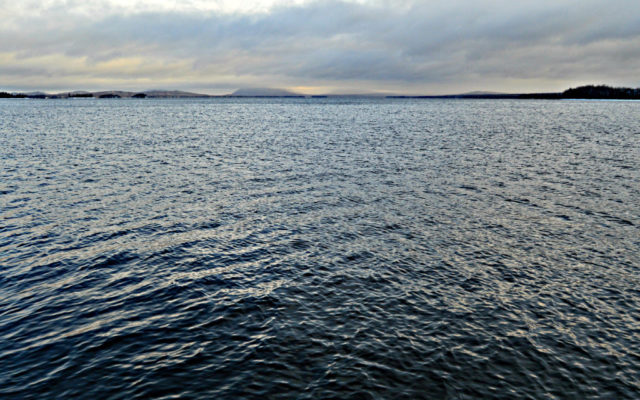
Moosehead fishing report — Rainbow Lake update
Last spring, I wrote about a project to prevent invasives from gaining access to Rainbow Lake. Rainbow Lake is one of just a dozen waters in Maine that holds native Arctic charr. In fact, Maine is the only state in the lower 48 to have any native Arctic charr. These fish are very sensitive to aberrations in the natural ecosystem. We nearly lost two charr populations recently at Big Reed Pond and Big Wadleigh Pond after someone illegally introduced smelt. We restored these native populations by transporting adults from the ponds to a private hatchery then chemically reclaiming the small ponds. The adults were propagated in the hatchery and the offspring and remaining adults were restocked in the ponds. The staff time and costs involved in these restorations were tremendous, but they were definitely worthwhile projects.
We typically think of bass, crappie, and pike when we talk about invasives in Maine. But salmon are not native to Rainbow Lake and any type of competition with the native charr is bad news. When we had substantiated reports of salmon in Rainbow Lake, we knew we had a serious problem. Salmon have been present in the drainage since the turn of the century, but we never had reports of them reaching Rainbow Lake or the Rainbow Deadwaters on Rainbow Stream. The water conditions must have been just right at some point in the past few years to allow young salmon to pass up the steep stream. To make matters worse, the old driving dam that had been an impasse to fish passage, was now in disrepair. Once salmon passed the obstacles downstream, there was nothing to stop them from getting in the lake.
A new dam with a fish barrier was designed and construction began last winter. Rainbow Lake is one of the most remote locations in my region, so there were some logistical challenges. There were no maintained roads to the lake. Anglers typically fly in or hike several miles to fish the lake. So, about three miles of the old Rainbow Lake Tote Road had to be reopened enough to get an excavator to the site. We helped install the barrier in early April as the snow and ice were receding. I don’t think we could have waited one more day and been able to travel by snowsled. A little more work was necessary this fall and now we have an excellent barrier in place.
As you can tell, this was a big project and The Nature Conservancy, Wright Pierce, Bion Tolman, and Cianbro were instrumental in getting it done. Thank you!
This fall we took advantage of having a trail into the lake and we set some nets in Rainbow Lake. Our mission was to net near the outlet and capture/remove any mature salmon that may be looking to return to Rainbow Stream to spawn. We also deployed a few new experimental traps that were designed to capture charr in deep water.
We had a very successful 10 days of netting at Rainbow Lake. First, we did not take any salmon and that is a good thing. We had a report of just one salmon caught in the lake this past summer, compared to 2015 when at least 10 were caught. We believe the number of invasive salmon in the lake is dwindling and the barrier should prevent any more from gaining access to the lake. We checked the two small tributaries to the lake and did not see any sign of salmon spawning. We were successful at catching a few charr while we were netting. Our experimental traps came up empty, but we did find some mature charr with our trapnets in an area we felt was a likely spawning site. This was a very positive finding since we have struggled in the past to locate charr spawning sites. f, in the future, the department needs to have a source of charr for a restoration or relocation program, this site may be useful to collect charr.